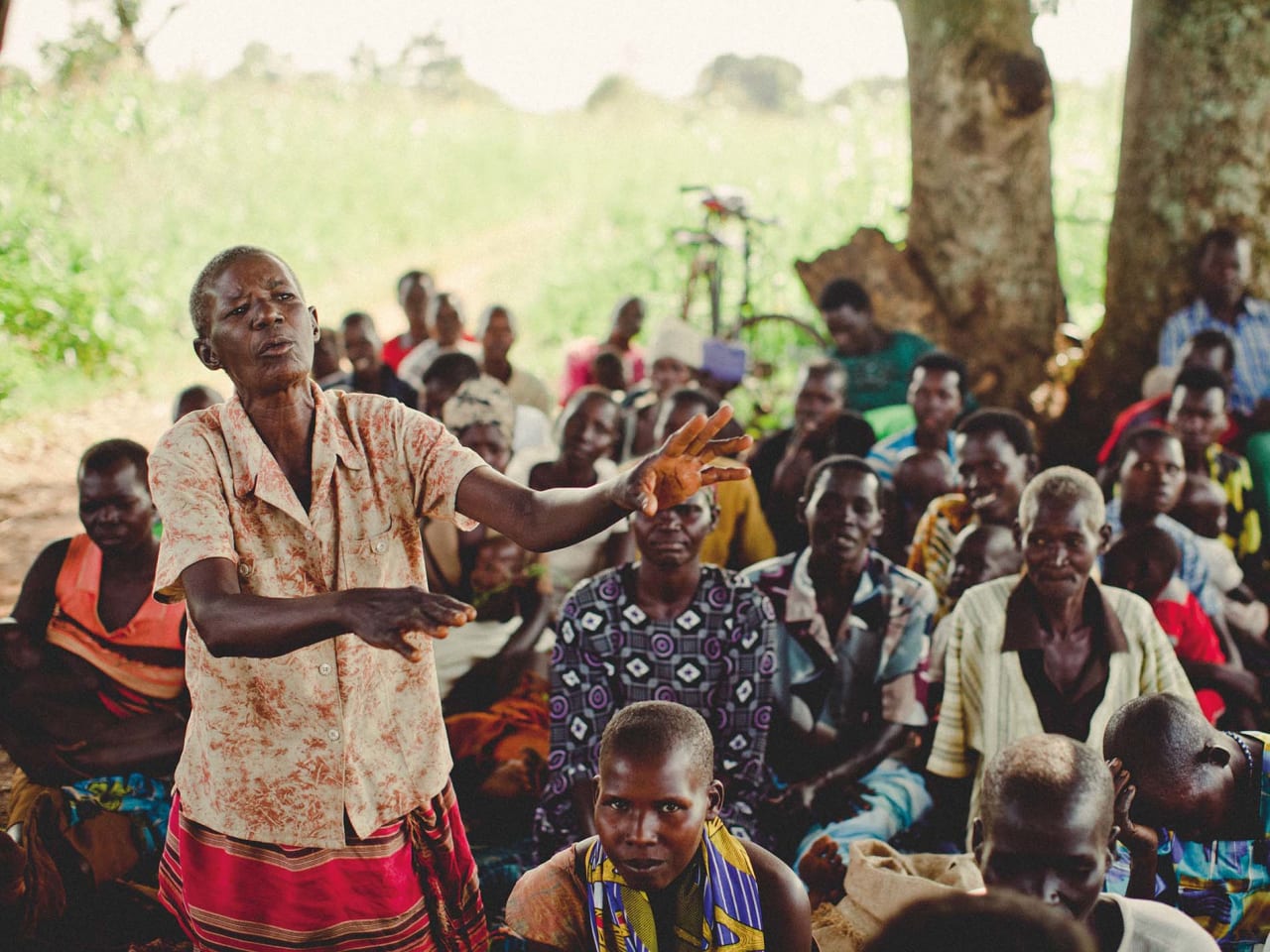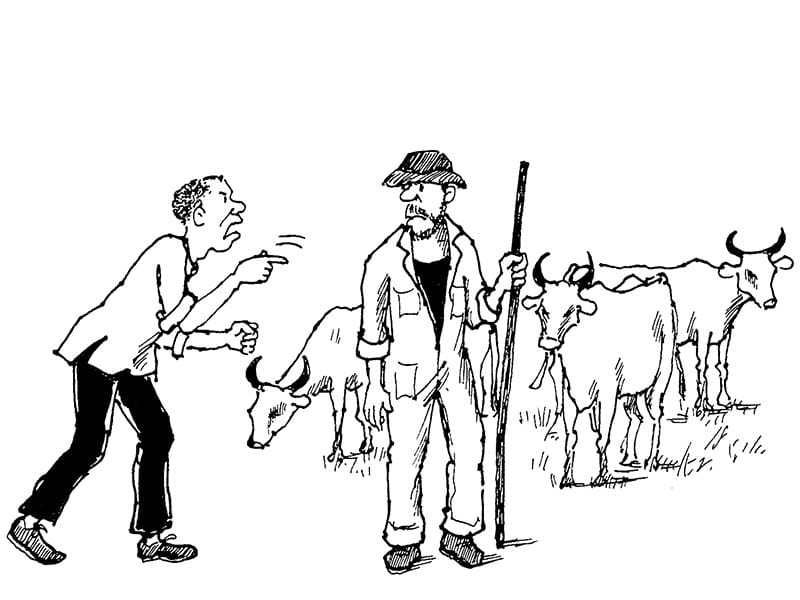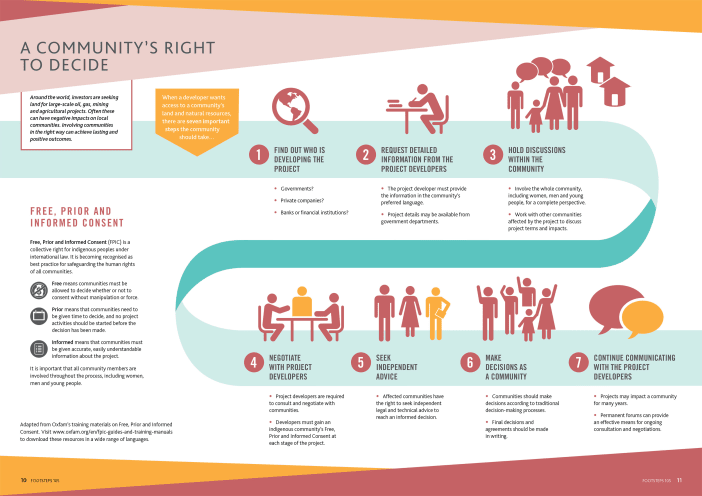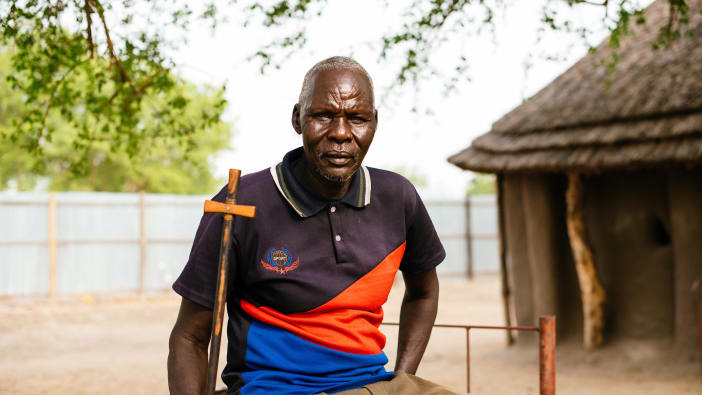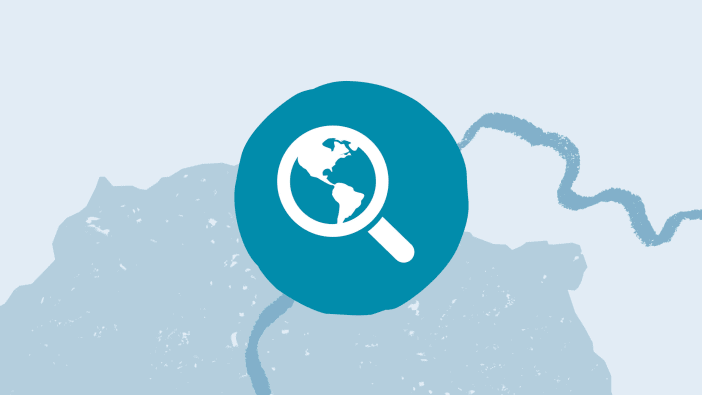Conflicts over land are very common and occur at all levels. Communities may face three main kinds of land conflicts:
- Conflicts within a community. These may be between members of a household, different families or whole sub-groups within a community. For example, local elites may try to unjustly claim common areas as their own private land.
- Conflicts between one community and a neighbouring community. These conflicts are often to do with boundary disputes.
- Conflicts between a community and a person outside the community, such as an investor or government official. For example, the government might sell or lease community lands to an investor without consulting the community, creating conflict between the investor and community.
Preparing for land conflicts
Rather than simply waiting to respond to land conflicts as they arise, communities should identify potential conflicts and create conflict management plans in advance. Communities can work through the following two brief activities:
- Identify conflict ‘warning signs’. Communities can make a list of warning signs that would be evidence of increasing tensions within or between communities. They can rate warning signs as ‘yellow,’ ‘red’ or ‘black’ to signify how severe the conflict may become. Communities could also identify what kinds of incidents might quickly create serious conflict and make it necessary to call in support immediately.
- ‘Map out’ individuals, organisations and strategies that could help resolve conflicts. Communities should prepare a list of specific individuals (and their contact information) whom they can call for immediate help if a conflict becomes dangerous. Communities may also want to identify whom to call for different kinds of conflicts. For example, a religious leader may be the best person to resolve a conflict about shared access rights, while a government official may be best placed to help resolve a conflict related to formal district boundaries.
Three strategies
In many cases, taking a case to court will only prolong the conflict, take up valuable time and resources, and deepen hostilities. Also, courts – and court procedures – may be biased toward elites or those with more power. In contrast, alternative conflict resolution strategies such as mediation can be less costly, less time-consuming and more likely to bring about reconciliation. Three alternative conflict resolution strategies are described below. Local leaders can help to decide which strategy is most appropriate to the conflict and local context.
- Holding community meetings to facilitate open dialogue. This involves bringing together all those involved in a disagreement and creating an open, public discussion. The purpose is to hear all of the stories and identify the roots of the problem, the harm done and all relevant laws. Both customary/indigenous and formal/statutory laws should be discussed. A facilitator should moderate the discussion to ensure that everybody has an opportunity to speak and that all important details are addressed.
Open dialogues may work well in a range of situations, including:
- addressing unjust customary practices that are putting vulnerable groups at a disadvantage
- tackling disputes within a community about shared use of natural resources and land
- resolving border disputes between neighbours.
-
Working with trusted community leaders and government officials. In situations where internal discussions and negotiation may not work, it may be useful to take the conflict higher. Respected leaders may be able to use their authority to help parties resolve difficult land conflicts.
For example, if a local government official is intimidating community members and grabbing their lands, it may be most effective to call a trusted, respected official from a higher level of government to bring the local official into line. If a conflict is on the verge of becoming violent, communities may urgently request the help of very high-level government officials.
-
Working with trusted community leaders and government officials. In situations where internal discussions and negotiation may not work, it may be useful to take the conflict higher. Respected leaders may be able to use their authority to help parties resolve difficult land conflicts.
For example, if a local government official is intimidating community members and grabbing their lands, it may be most effective to call a trusted, respected official from a higher level of government to bring the local official into line. If a conflict is on the verge of becoming violent, communities may urgently request the help of very high-level government officials.
Mediation. Mediation is generally appropriate if negotiations have reached a standstill and the parties feel they need assistance from someone who is not part of the dispute. Mediation may be necessary when:
- people are becoming very emotional, making compromise difficult
- communication between the parties is not going well
- there is serious disagreement over relevant facts and information
- there is a significant power imbalance between the parties.
Mediation is a structured process led by a neutral third-party mediator. Mediators can be lawyers, community mobilisers or trained, respected community members. The mediator’s job is to remind the parties of the relevant laws, help the parties communicate, find common ground and assist in identifying desired solutions. The mediator’s goal should be to help both parties to reach a resolution that benefits both sides, not just one.
Once a resolution to the conflict is reached, it should be recorded in writing and signed by all the parties. This will help ensure that everyone sticks to the agreement.
If conflict resolution fails:
If more relational methods are not successful, facilitators may need to organise public meetings or media strategies that involve ‘naming and shaming’ abusive or corrupt elites and officials. They may also need to use other non-violent methods of demanding that the state meets its obligation to enforce laws protecting community land rights. Such tactics can help to publicly hold local officials and elites accountable for their actions and give communities an informal platform for demanding justice.
Land disputes can grow into violent conflicts if they are not addressed properly. If the approaches described above do not resolve a conflict, it may be necessary to refer the case to the formal court system.
All materials on this page are adapted from Namati’s Community Land Protection Facilitators Guide.
Further Reading
Community Land Protection Facilitators Guide
By Rachael Knight, Marena Brinkhurst and Jaron Vogelsang
Namati has produced this step-by-step manual for grassroots advocates seeking to help communities protect their land rights. The guide helps communities to map their lands, develop community by-laws and seek formal government recognition of their rights. Available in English only. Please email [email protected] to request a printed copy. Alternatively, visit www.namati.org/ourwork/communityland to download a free copy in English and to watch short animated videos of the process in English, French, Portuguese and Spanish.
Tips for resolving boundary disputes
Here are some tips for resolving disputes that may occur when neighbouring communities are trying to negotiate and agree on their boundaries.


